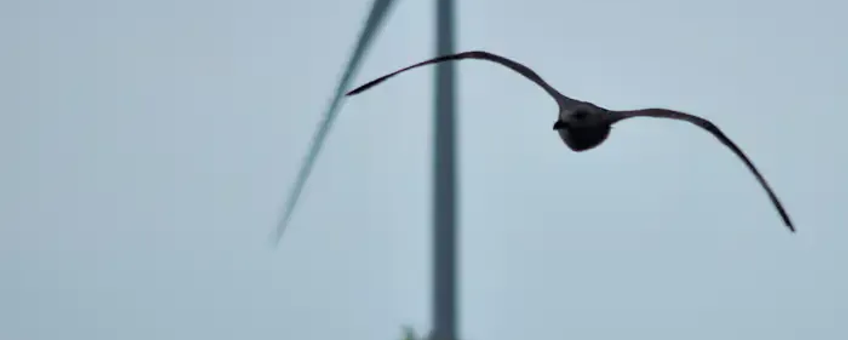
Making wind energy safer for birds
Institute for Biodiversity and Ecosystem Dynamics (IBED)The North Sea is used throughout the year for all kinds of birds. What risks do the wind farms pose to the birds? Researchers at the University of Amsterdam, led by Judy Shamoun-Baranes, have just finished a five-year project in which they used high-tech tools to study interactions between birds and offshore wind turbines. They have also made a website that uses interactive maps, graphics and videos to present their findings.
It is early autumn. Soon millions of adult and juvenile birds will leave their summer breeding grounds in Scandinavia and the UK to fly south for the winter. We know they will fly over the North Sea sometime during the next three months, but when exactly will they arrive? And which areas will they be most likely to fly over?
These are a couple of the questions the research team was interested in. In the past, biologists studied bird migration and movement simply because they wanted to better understand the fundamental ecology of these species. But nowadays, flying birds encounter some major man-made hurdles. Countries like the Netherlands are building thousands of wind turbines, some as tall as 250 meters, in and around the North Sea. In the face of climate change, sustainable energy infrastructure must be built, and quickly. However, the millions of birds that migrate over the North Sea are at risk of being killed by the turning blades. Or they may be frightened away from the best routes or resting areas, which could make it harder for them to survive a stressful migration season.
Radar and GPS trackers as research tools
In an effort to develop the knowledge and tools needed to support the sustainable co-existence of birds and offshore wind farms, researchers at the University of Amsterdam Institute for Biodiversity and Ecosystem Dynamics (IBED) have been working on new ways to study migration and movement and to predict when and where birds will migrate. They believe that if we can reliably predict times of high migration at least 48 hours in advance, wind farm operators can temporarily shut down turbines and make migration safer for birds.
In addition to more traditional visual observations and color-ringing, the researchers also monitored bird movement using innovative new tools. They tag individual birds with tiny GPS tracking devices to see the tracks of individual birds as they navigate through wind farms. They also used weather radar and specialized bird radars to visualize mass migration events made up of thousands of birds migrating across large areas and to study the movements of birds that nest along the Dutch coast. Several interactive visualizations of this data can be seen on the website.
Predicting bird movement in and around North Sea wind farms
The researchers were tasked with developing large-scale models designed to predict migration. The models integrate data on bird movement and weather conditions with wind turbine placement and activity in order to assess the risks to birds passing through the area.
The predictive model developed during the project was used to forecast high migration and trigger temporary shutdown at a wind farm in the North Sea for the first time in spring 2023. This will help mitigate the impact of wind energy on seabirds.
More information
- See the interactive website.
Text and photo: Institute for Biodiversity and Ecosystem Dynamics (IBED)
